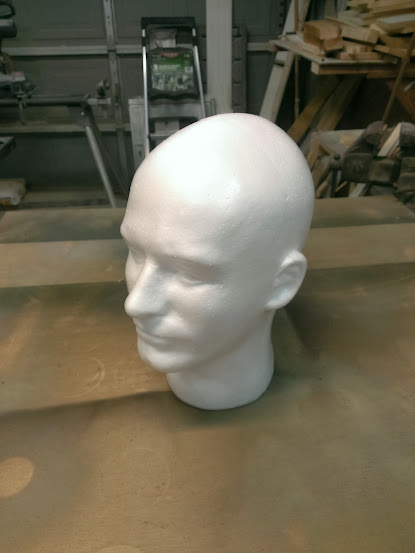ADDING VALUE TO YOUR HOME
If you’re about to place your home on the market and wondering just what you can do to maximize your asking price, pay attention. There are a number of home improvements you can make that pay significant dividends. Some require a small investment, others a little more. But all are sure to increase the overall value of your home and help you get the most bang for your buck. Take a look at the info-graphic below for some ideas on what you can do to ensure you laugh all the way to the bank on auction day.
Adding Value to Your Home - Infographic by Renovation Kingdom
Clean up
Getting rid of everything you don’t need or use anymore, and freeing up the space in your home in the process, can increase the value of your home by as much as 7 percent. Nothing pushes potential buyers away from your home more than clutter – your clutter. It makes it hard for them to imagine being in the house themselves, and makes your home look smaller.
Clearing the clutter creates a more open space, and allows you and potential home buyers to make better use of it. How about installing a small at-home gym in that garage of yours, now that you actually have the space for it? Or how about making better use of that loft space of yours? Experts suggest that converting a loft into an extra room can add up to 20 percent of value onto your home. Clearing up the clutter isn’t just confined to indoors. How about clearing the junk in your backyard and creating a nice patio space for entertaining your friends and family on those sultry summer evenings? If there’s one investment you can make to your home that’s sure to add tons of value to your home, it’s transforming your yard into a landscaped paradise. You’d be hard pressed to find a single investor who doubts this, although they may disagree on exactly how much extra value it can bring (estimates range from between 5 to 20 percent).
Kitchen and Bathroom
Your home’s kitchen and bathroom(s) are two of the most used rooms in your home, and so giving them a new lease on life – either by changing your appliances/fittings, remodeling them, or changing the flooring – can increase the value of your home from between 3 and 7 percent. In fact, real estate experts agree that it’s the kitchen that ultimately sells the home. So make sure it’s in good shape before selling if you want to see your home go for as much as possible.
There are also a number of things you can do to the outside of your home to increase it’s curb appeal and ultimately it’s value. Take your entry doors. Your front door is one of the most important components of your home, and often the first thing potential buyers notice. Replacing your front door with a modestly priced steel door, for example, can add around 5 percent to your asking price. The same goes for your garage door. Automatic wooden or aluminum garage doors can increase the value of your home by as much as 5 percent and help it sell faster.
Roofing
Lastly, although perhaps only visible through Google Maps, replacing the roofing of your home and perhaps even adding some solar panels is sure to pay considerable dividends – often by as much as 1 to 6 percent, according to the experts.
Investing wisely in your home prior to putting it up on the market will generate the extra income you need to take that next important step in life. So take the time and spend the effort in putting some of these recommendations into practice, and charge the asking price you deserve.
*This post was contributed by Bob Gorman at Renovation Kingdom Read Article »
Adding Value to Your Home - Infographic by Renovation Kingdom
Clean up
Getting rid of everything you don’t need or use anymore, and freeing up the space in your home in the process, can increase the value of your home by as much as 7 percent. Nothing pushes potential buyers away from your home more than clutter – your clutter. It makes it hard for them to imagine being in the house themselves, and makes your home look smaller.
Clearing the clutter creates a more open space, and allows you and potential home buyers to make better use of it. How about installing a small at-home gym in that garage of yours, now that you actually have the space for it? Or how about making better use of that loft space of yours? Experts suggest that converting a loft into an extra room can add up to 20 percent of value onto your home. Clearing up the clutter isn’t just confined to indoors. How about clearing the junk in your backyard and creating a nice patio space for entertaining your friends and family on those sultry summer evenings? If there’s one investment you can make to your home that’s sure to add tons of value to your home, it’s transforming your yard into a landscaped paradise. You’d be hard pressed to find a single investor who doubts this, although they may disagree on exactly how much extra value it can bring (estimates range from between 5 to 20 percent).
Kitchen and Bathroom
Your home’s kitchen and bathroom(s) are two of the most used rooms in your home, and so giving them a new lease on life – either by changing your appliances/fittings, remodeling them, or changing the flooring – can increase the value of your home from between 3 and 7 percent. In fact, real estate experts agree that it’s the kitchen that ultimately sells the home. So make sure it’s in good shape before selling if you want to see your home go for as much as possible.
There are also a number of things you can do to the outside of your home to increase it’s curb appeal and ultimately it’s value. Take your entry doors. Your front door is one of the most important components of your home, and often the first thing potential buyers notice. Replacing your front door with a modestly priced steel door, for example, can add around 5 percent to your asking price. The same goes for your garage door. Automatic wooden or aluminum garage doors can increase the value of your home by as much as 5 percent and help it sell faster.
Roofing
Lastly, although perhaps only visible through Google Maps, replacing the roofing of your home and perhaps even adding some solar panels is sure to pay considerable dividends – often by as much as 1 to 6 percent, according to the experts.
Investing wisely in your home prior to putting it up on the market will generate the extra income you need to take that next important step in life. So take the time and spend the effort in putting some of these recommendations into practice, and charge the asking price you deserve.
*This post was contributed by Bob Gorman at Renovation Kingdom Read Article »


















.jpg)





















